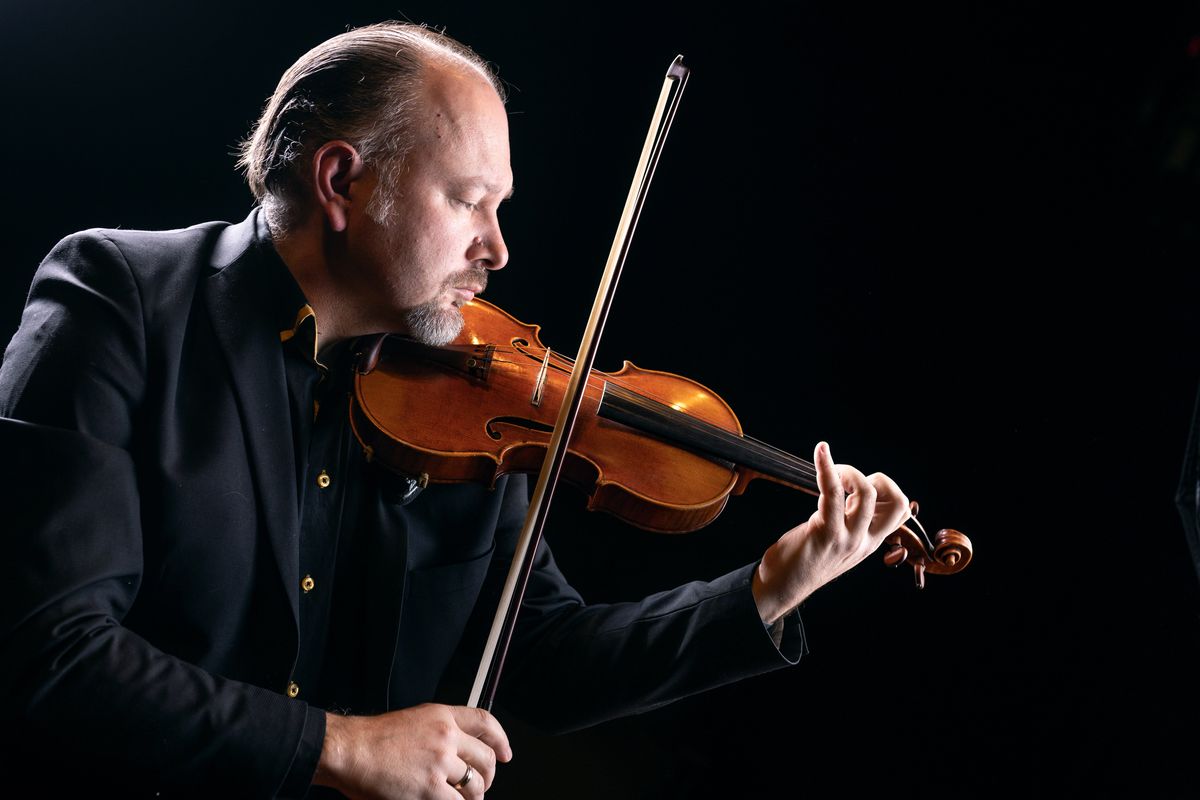Symphony’s Masterworks 5 features Mateusz Wolski and a new violin

From Piotr Ilyich Tchaikovsky to Edward Elgar, themes of love and friendship run throughout this weekend’s “Spokane Symphony Masterworks 5: Pictured Within” concert.
“The starting point was really Elgar’s ‘Enigma Variations,’ ” music conductor James Lowe said. “Each variation of the tune portrays a different friend of his.”
Written near the end of the 19th century, the “Enigma Variations” are rumored to hide clues about Elgar’s life.
“There’s a secret hidden in this piece,” Lowe said. “It’s never played, but it runs through the whole piece.”
Opening with William Grant Still’s “Wood Notes,” the program continues with Tchaikovsky’s “Violin Concerto in D major, Op. 35,” which will feature Spokane Symphony concertmaster Mateusz Wolski as soloist, while assistant concertmaster Jeanne Bourgeois takes his usual seat during the performances.
“It’s my first time playing this piece with an orchestra,” Wolski said. “And to be able to play a concerto with the orchestra – that’s been a huge part of my loving being concertmaster of the Spokane Symphony – the opportunity to once in a while switch parts and be somebody else for a weekend.”
Wolski customarily plays a violin owned by the Spokane Symphony, crafted by Italian master Carlo Landolfi in 1779. But for this weekend’s concerts, he plans to use an instrument owned by the Spokane String Quartet and built in 2005 by Michigan-based craftsman Joseph Curtin.
After picking the Curtin violin up on a whim to demonstrate a technique for one of his students, something about the sound jumped out at him.
“It actually sounded better,” he said. So after the lesson, he started testing out different sections of the concerto and realized the Curtin was the way to go.
“As an instrumentalist, you always are trying to find a performance edge … there are different demands depending on what you do,” Wolski said. “When you play as a chamber musician (or) a concertmaster, you have a different set of priorities than when you’re a soloist.
“Listening back to the recording – I play on the Landolfi, and it is beautiful. But then I switch to this violin, and it’s like, boom, 10% more volume.”
And in this case, that extra sound is “a huge advantage.”
“The whole concept of a concerto is that you have a David and Goliath, a little violin, and then you have this whole, gigantic orchestra, talking back and forth,” he said.
Good composers will foster an almost adversarial energy between the two that usually by the end of the piece is resolved.
It’s like an enemies to friends story, Wolski explained. “The great concertos are exactly the same way.”
A mainstay of the violin repertoire, the concerto is long, confusing and technically difficult. But even with all those barriers, the beauty of the piece has stood the test of time.
It was the first violin concerto Wolski ever heard. He remembers his aunt playing a David Oistrakh LP with a recording of the piece and pretending to hate it. Of course, when no one was looking, he would run directly back to the record player.
“I was just absolutely hooked,” he said. “I remember trying to learn the piece by heart – I didn’t understand the concept of the concerto yet – there were just tunes from the orchestra and the solo violin.”
His dream of playing the piece has been decades in the making.
“So, the fact that we are actually here, and it’s happening in spite of everything that’s been thrown in our path – it’s pretty magical,” he said.